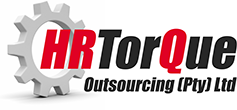The UIF Commissioner launched a new facility a few months back to allow employers to check whether they are UIF compliant. In parallel UIF have been sending out letters to clients who are not compliant. This against the backdrop of a large number of TERS audits and the announcement by UIF they will be engaging forensic auditors to help them with this process.
It is admirable the progress UIF have made since the start of lockdown in March 2020 to improve their data and systems in response to TERS. This is a welcome improvement. However, the usual challenge exists with authorities that they don’t think through some of the implications of their actions.
We have set out below some of the challenges we have seen with the compliance process and UIF in particular (only as it relates to submissions and not in relation to contributions and claims – another time for those perhaps).
- It appears the databases populated by ufiling and eDeclarations (edec) are still separate and don’t communicate with one another: We have seen examples where an employer has consistently sent in eDeclarations, but a UIF officer in performing an audit claims they haven’t submitted information for a particular employee, when it is clear from the edecs they have. We assume the UIF officer is referring to the ufiling info.
- Because the systems don’t communicate it is impossible for an employer to check ufiling to see what info UIF has for them. They can only be reactive and respond to requests for data.
- An easy solution would be for employers to use ufiling instead of edecs. The challenge however is twofold:
- Ufiling uploads are limited to a certain number of employees so bigger companies can’t use the system
- One can only make a bulk ufiling upload if an employee has already been manually loaded to the system. This makes it cumbersome to manage because all engagements and terminations have to be done individually.
- The compliance certificates are helpful in providing a breakdown of problems with the information UIF has for an employer. This is useful, but once again comes with some challenges:
- The compliance certificate for a specific UIF number can only be accessed by one user per UIF number. This is problematic for larger groups or employers who rely on an agent or third party to manage their UIF.
- The certificate does show when returns have not been submitted. However, the vast majority of errors relate to a simple issue. If an employee is terminated, but UIF has not been informed of the termination through edec (a UI19 won’t do) then UIF will assume the employer has mistakenly not sent a declaration for that employee from that period onwards. Instead, it may just be that the employee was terminated on payroll in the following month, but had no payroll record and was therefore not included on the edec. This can result in an employer have hundreds of records to correct even though UIF has been told correctly and contributions for UIF have been made correctly. The double whammy is the employer will not be able to get a certificate of good standing until this has been resolved.
In the interim we strongly recommend you register at UIF for this process and find out now what you need to do to comply so that it doesn’t create a last minute problem for your business.

